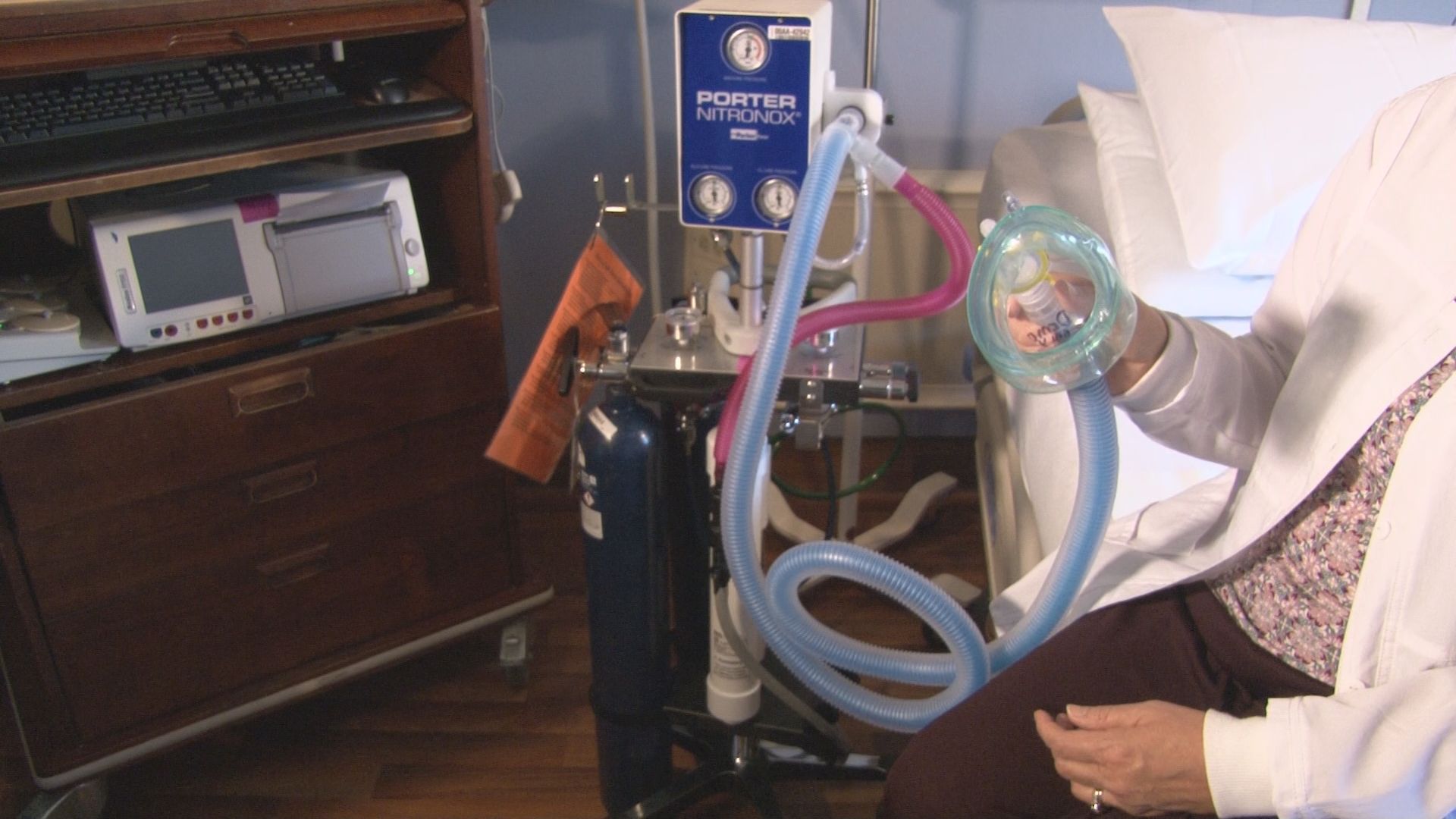Expectant mothers can now use a new pain management option for labor without leaving the Triad.
Cone Health Women's Hospital and Cone Health Alamance Regional started offering nitrous oxide ('laughing gas') Monday, becoming the first Triad-area labor and delivery hospitals with the service.
Before now, the closest hospital offering nitrous oxide as a pain management option in labor was UNC-Chapel Hill.
"Women were asking for it, and we wanted to give women more options who could not have an epidural or other pain management options," said Walidah Karim, certified nurse midwife at Cone Health Women's.
WFMY News 2's Meghann Mollerus met Cone Health's first patient to use it. Jiyoun Paik said she planned to have an epidural with her second daughter, Evelyn, but her low platelet count made the option too dangerous. So, her doctor and nurse offered her something she had never heard of -- nitrous oxide -- instead.
"Nitrous (oxide) was just enough to take her over that hump of labor to get to her to be able to have the baby," Karim said.
Paik said she had a positive experience using the nitrous oxide.
"It feels good. Makes me (take) deep breaths. Relaxing," she recalled.

How much does it cost? Cone Health Women's registered nurse Heather Mitchell said the machines cost $5,000 each. Women's Hospital has two, and Alamance Regional has one.
Patients, she said, pay nothing, as the service becomes part of the existing room charge.
Why, then, does UNC-Chapel Hill charge approximately $500 for nitrous oxide? UNC-Chapel Hill's program is run through the anesthesia department. Cone Health's is run by physicians, nurses and midwifes who are trained on it.
"You get the physician's order, as long as they (the patients) meet the criteria in getting the nitrous oxide. And then, the nurses will teach the patients how to properly use the nitrous (oxide)," Mitchell said.
Nitrous Oxide is comprised of 50 percent nitrous and 50 percent oxygen. Women can use it at any point in the labor process, before or instead of an epidural. The nitrous oxide effects last approximately three seconds with each hit.
TYPICAL REQUIREMENTS:
- Able to self-administer the gas (hold the mask to her face without assistance, so she knows when she has had enough and avoids passing out)
- No recent ear surgery
- No B-12 deficiency
- No pulmonary hypertension
- No nitrous oxide recreational use
- No intoxication at time of labor
COMMON SIDE-EFFECTS:
- Nausea
- Dizziness
- Dissociated feeling
- Dry mouth from breathing the dry gas
THE COMEBACK:
"It's been used historically for decades in many other countries with no known adverse effects to the baby long-term," said Dr. Elsje Harker, UNC-Chapel Hill obstetric anesthesiologist.
Since the 1940s, the epidural pushed laughing gas --formally Nitrous Oxide -- aside until a spike in demand four years ago.
"The equipment just wasn't available in the U.S. any longer because it wasn't popular. And, so, they (the U.S. Food and Drug Administration) had to get a new manufacturer for the equipment," explained Harker.
"I think that women are asking for it. I think partly the show "The Midwife" (PBS) has caused some people to go hey, why don't we have that?" said Meg Berreth, UNC-Chapel Hill certified nurse midwife.
Berreth and a team of other certified nurse midwives worked to get the gas back at UNC-Chapel Hill's Women's Hospital in December 2013. Harker and Berreth said since then, approximately 10 percent of their hospital's labor patients have opted to use it at some point in their labor.
►Make it easy to keep up to date with more stories like this. Download the WZZM 13 app now.
Have a news tip? Email news@wzzm13.com, visit our Facebook page or Twitter.


